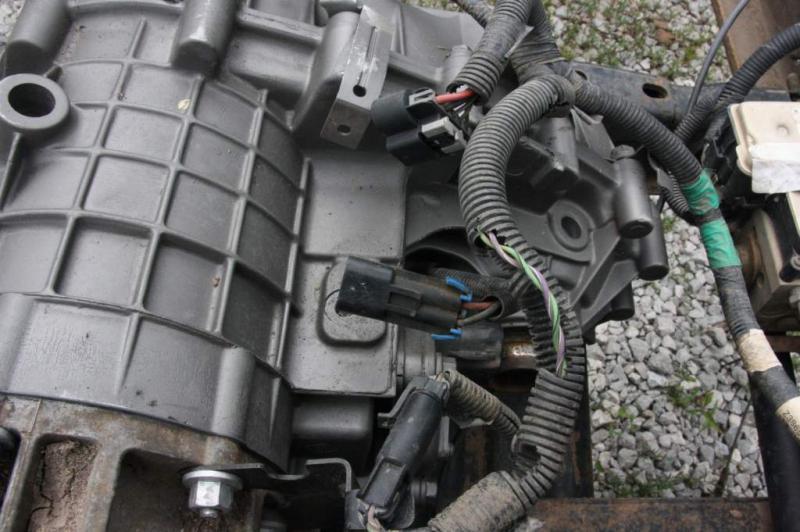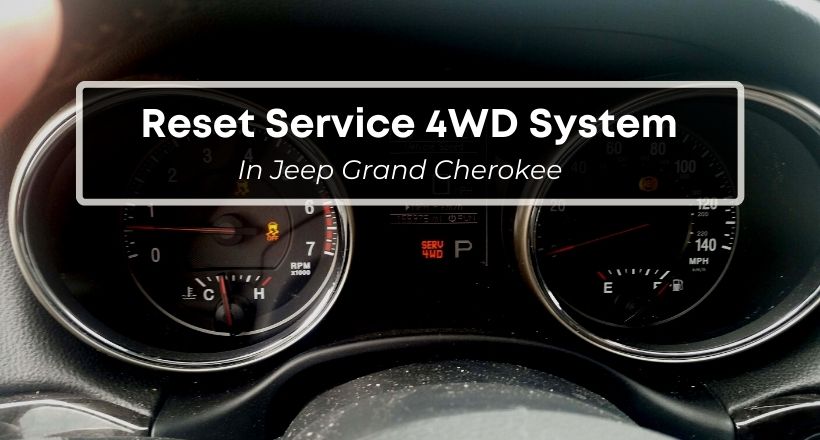The Jeep Grand Cherokee, like most modern vehicles, comes with different warning indicators/messages to alert the driver.
These indicators appear on the dashboard display and usually indicate an issue or two with internal parts of the vehicle, such as the engine, transmission, brakes, etc.
One such warning is the ‘serv 4WD system‘ message. It mostly appears in Grand Cherokee Models from 2014 onwards.
Jeep Grand Cherokee ‘Service 4WD System’ Reset
Here’s how you can reset the serv 4WD system warning light.
- Disengage the 4WD system.
- Turn off the ignition and open the bonnet.
- Open the fuse box and find the location of the ‘FDCM EDIFF’ fuse from the diagram on the inner side of the fuse box cover. It’s fuse #25 in my car but can be different in yours.
- Remove this fuse with a fuse puller or a needle-nose plier.
- Also, make sure that all of the other fuses are fully seated.
- Start the vehicle and drive back and forth for a few meters a few times.
- Stop the vehicle and put the fuse back in its original place (after a few minutes). If it looks to be burned or melted, replace it with a new fuse of the same amperage.
For most people, it does the job, and they no longer get the serv 4WD system message when pulling the 4WD lever.
But If you’re still getting this error, continue reading this post because there’s an underlying issue triggering this light.
What Does Service 4WD Mean on Jeep Grand Cherokee?

Short for service 4WD, the ‘serv 4WD’ is a 4-Wheel Drive (4WD) warning indicator and usually appears when you try to operate your Jeep in 4WD mode.
It means the 4WD system is not working properly and requires a service.
To verify that it’s not a false alarm and there’s something wrong with the 4WD, watch out for the symptoms listed below.
Common Signs of A 4WD Problem
- Difficulty in engaging 4WD
- Rattling noise when activating 4WD
- The 4WD system is not switching back to 2WD
- Stong vibrations while driving in 4WD
- Difficulty in steering properly
- Fluid leaking out of the 4WD system
- Reduced fuel efficiency
- The 4WD not engaging in low traction situations such as mud or snow.
Common Reasons for Serv 4WD System Message
In theory, it should only appear when there’s a problem with the transfer case (faulty switch or transfer case control module) or front/rear differentials.
But in reality, it can happen due to a variety of reasons.
- Loose transfer case wiring
- Loose battery cables
- Faulty rear axle motor
- Faulty ABS speed control sensor
- Corroded wire connector to the axle
- Faulty crankcase
- Faulty parking sensor
- Rear Drive module failure
- Failure of the actuator motor plug
- Slipping transfer case
How to Clear the Service 4WD System Light In Jeep Grand Cherokee?
If the fuse-pulling method is not working, you can try these additional steps to clear the serv 4WD light.
1. Check The Battery And Alternator

Sometimes, a battery issue can make the voltage unstable, which can cause the Grand Cherokee to throw up false codes, such as serv 4WD.
That’s why you should always check the battery first. You need to confirm that it’s not dead (or dying) and that the terminals have no corrosion.
The same goes for the alternator. Most people don’t realize that it’s the alternator, not the battery, that powers the electrical systems in your vehicle. Therefore, any voltage issue with it will affect other vehicle components.
2. Reset The ECU
Sometimes, you get false warning messages due to residual charge in the electrical system or any vehicle component.
Here’s how you can solve this:
- Turn off the ignition
- Disconnect the negative terminal from the battery.
- Leave it isolated overnight.
- After that, connect the positive and negative terminals for 5-10 minutes via a jumper cable. It will drain all the power in the Jeep’s computer system (ECU) and clear all fault codes.
- Remove the jumper cable and reconnect the negative terminal to the battery.
3. Replace The ABS Wheel Sensor

Sometimes a damaged ABS sensor can falsely trigger the ABS /Traction control and serv 4WD lights.
Therefore, you should inspect that sensor and see if it has any physical damage.
If it turns out to be damaged, there’s nothing to worry about. All you need is a new ABS wheel sensor.
In the meantime, there’s a workaround to override this warning and put the WK into a 4-wheel drive, even with the serv 4WD light staying on.
Here’s how it goes:
- Put the Jeep in the ‘Park’ position and turn it off.
- Shift the 4WD Lever to the 4H position. Then, start your vehicle.
- Because of this, the transfer case should lock and engage the 4H before the system computer can discover any error code.
- All 4H, 4L, and 4WD options are available now and will work fine as long as the Jeep is left running.
4. Check Transfer Case Wiring

Transfer case wiring can be another reason for the serv 4WD warning.
A short/loose connection in the wiring or corroded connectors can disrupt the communication between the control module and the transfer case components, causing the warning light to illuminate.
5. Hire a Mechanic
If you’ve tried all the methods above and the warning message remains, it’s time to go to a repair shop.
At this point, it looks like an internal fault in the transfer case that you cannot DIY. In many cases, you’ll require a new transfer case motor altogether.
Conclusion
When getting a serv 4WD warning, you should verify whether something’s wrong in your 4WD system or if it’s just a false flag.
If it’s the latter, you can try to replace the fuse or work around this warning (by shiting to 4H before starting the vehicle).
But if there’s a genuine problem, you should check your transfer case wiring and battery/alternator. Or ask for professional help if nothing else is working.
Frequently Asked Questions
Can I Still Drive With the Serv 4WD Light On?
In normal circumstances, you cannot drive the vehicle in 4WD mode if this warning light is on. It can be a huge deal if you regularly drive on off-road surfaces (sand dunes, beaches, mountainsides, etc.).
But driving on paved roads shouldn’t be an issue since the 2WD mode is working fine.
Are 4WD More Expensive to Service?
4WD and AWD systems are generally more expensive to repair than traditional 2WD systems due to extra complexity and expensive internal components (transfer case, differential, etc.).
What Are The Most Common 4WD Problems?
The most common 4WD problems include issues with the transfer case, differential problems, driveshaft vibrations, and electrical malfunctions affecting the engagement or operation of the 4WD system.
Does 4WD Increase Fuel Consumption?
As 4WD provides power to all four wheels of your vehicle, this extra power demand puts more load on the engine, resulting in extra fuel consumption.
Is Driving Around in 4WD Bad?
Along with increased fuel consumption, there are some additional downsides when you drive on highways (or paved surfaces) in 4WD mode, such as reduced maneuverability, uneven tire wear, and reduced steering responsiveness.
Therefore, you shouldn’t use 4WD all the time.
How to Reset Service 4WD Light in Jeep Cherokee?
The 4WD light reset process for the Jeep Cherokee is similar to the one for the Grand Cherokee. Here’s what you need to do: disengage the 4WD system, turn off the ignition, pull the 4WD fuse out, and plug it back in after a few minutes.

